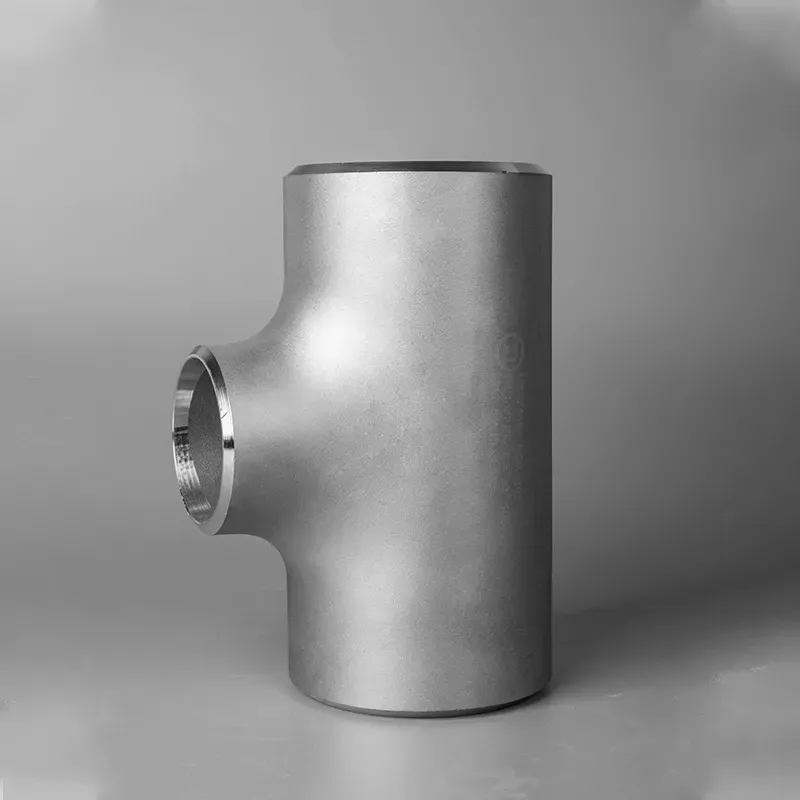-
Cangzhou Yulong Steel Co., Ltd.
-
Phone:
+86 13303177267 -
Email:
admin@ylsteelfittings.com
- English
- Arabic
- Italian
- Spanish
- Portuguese
- German
- kazakh
- Persian
- Greek
- French
- Russian
- Polish
- Thai
- Indonesian
- Vietnamese
- Zulu
- Korean
- Uzbek
- Hindi
- Serbian
- Malay
- Ukrainian
- Gujarati
- Haitian Creole
- hausa
- hawaiian
- Hebrew
- Miao
- Hungarian
- Icelandic
- igbo
- irish
- Japanese
- Javanese
- Kannada
- Khmer
- Rwandese
- Afrikaans
- Albanian
- Amharic
- Armenian
- Azerbaijani
- Basque
- Belarusian
- Bengali
- Bosnian
- Bulgarian
- Catalan
- Cebuano
- China
- China (Taiwan)
- Corsican
- Croatian
- Czech
- Danish
- Esperanto
- Estonian
- Finnish
- Frisian
- Galician
- Georgian
- Kurdish
- Kyrgyz
- Lao
- Latin
- Latvian
- Lithuanian
- Luxembourgish
- Macedonian
- Malgashi
- Malayalam
- Maltese
- Maori
- Marathi
- Mongolian
- Myanmar
- Nepali
- Norwegian
- Norwegian
- Occitan
- Pashto
- Dutch
- Punjabi
- Romanian
- Samoan
- Scottish Gaelic
- Sesotho
- Shona
- Sindhi
- Sinhala
- Slovak
- Slovenian
- Somali
- Sundanese
- Swahili
- Swedish
- Tagalog
- Tajik
- Tamil
- Tatar
- Telugu
- Turkish
- Turkmen
- Urdu
- Uighur
- Welsh
- Bantu
- Yiddish
- Yoruba

Nov . 06, 2024 09:07 Back to list
Understanding ANSI Flange Specifications for 150 LB Pressure Ratings and Applications
Understanding ANSI Flange 150 lb A Comprehensive Overview
When it comes to piping systems, flanges are essential components that serve as the interface between various elements, including pipes, valves, and pumps. Among the various standards used for flanges, ANSI (American National Standards Institute) is widely recognized, with the ANSI flange 150 lb being a common specification in many industries. This article aims to provide an in-depth understanding of ANSI flanges, focusing on the 150 lb class rating, its applications, features, and specifications.
What is an ANSI Flange?
ANSI flanges are defined under the ANSI/ASME B16.5 standard, which covers flanges made from metallic materials. These flanges come in various pressure ratings, which are assigned based on their ability to withstand specific pressures and temperatures. The lb in 150 lb refers to the pressure class rating of the flange, which indicates the maximum pressure that a flange can handle at a specific temperature.
The 150 lb Flange
The 150 lb flange is categorized as a low-pressure flange, typically capable of handling pressures up to 150 psi at a temperature of 100°F. Its design allows it to be used in moderate pressure applications, making it suitable for a wide range of industries, including water treatment, power generation, petrochemical, and more.
Material Composition
ANSI flanges, including the 150 lb class, can be manufactured from various materials, depending on the application requirements. Common materials include
- Carbon Steel Particularly A105, is popular due to its strength and durability, often used in applications involving water, steam, and other fluids. - Stainless Steel Such as 304 and 316, which offer excellent corrosion resistance, making them ideal for chemical processing and other harsh environments. - Cast Iron Suitable for low-cost applications, often used in infrastructure like sewage systems.
Design Features
ansi flange 150 lb

The 150 lb ANSI flange typically features a flat face or raised face design and is available in various sizes ranging from ½ inch to 24 inches, and even larger upon request. In addition, the flange may have bolt holes for securing it to the corresponding flange or piping system, with standard hole specifications to facilitate easy installation.
Gasket and Sealing
To ensure a leak-proof connection between flanged joints, a gasket is often placed between the flanges. The selection of the gasket material is critical, as it should be compatible with the fluids being transported. Common gasket materials include rubber, fiber, or metal, and they must be chosen based on the operating pressure, temperature, and chemical composition of the fluid.
Applications of ANSI 150 lb Flanges
The versatility of ANSI 150 lb flanges makes them suitable for various applications, such as
1. Water Systems Used extensively in water supply and waste management systems. 2. HVAC Systems Employed in heating, ventilation, and air conditioning systems to create secure connections. 3. Oil and Gas Suitable for low-pressure applications in the oil and gas industry, particularly for pipelines. 4. Food and Beverage Used in food processing plants where hygiene and cleanliness are paramount.
Installation and Maintenance
Proper installation is crucial for the longevity and effectiveness of ANSI 150 lb flanges. Operators should ensure proper alignment and apply the correct torque specifications when bolting flanges together. Regular maintenance checks are also recommended to inspect for signs of wear, corrosion, and leaks, ensuring that the flanges continue to perform effectively.
Conclusion
In conclusion, ANSI 150 lb flanges are vital components in various piping systems across multiple industries. Understanding their specifications, material options, design features, and careful installation and maintenance practices is essential for ensuring a reliable and safe operation. By utilizing these flanges correctly, industries can uphold efficiency and safety in their processes, enjoying the benefits that come from reliable and robust piping connections.
Latest news
-
ANSI 150P SS304 SO FLANGE
NewsFeb.14,2025
-
ASTM A333GR6 STEEL PIPE
NewsJan.20,2025
-
ANSI B16.5 WELDING NECK FLANGE
NewsJan.15,2026
-
ANSI B16.5 SLIP-ON FLANGE
NewsApr.19,2024
-
DIN86044 PLATE FLANGE
NewsApr.19,2024
-
DIN2527 BLIND FLANGE
NewsApr.12,2024
-
JIS B2311 Butt-Welding Fittings LR/SR 45°/90° /180°Seamless/Weld
NewsApr.23,2024
-
DIN2605-2617 Butt-Welding Fittings LR/SR 45°/90°/180° Seamless/Weld
NewsApr.23,2024











